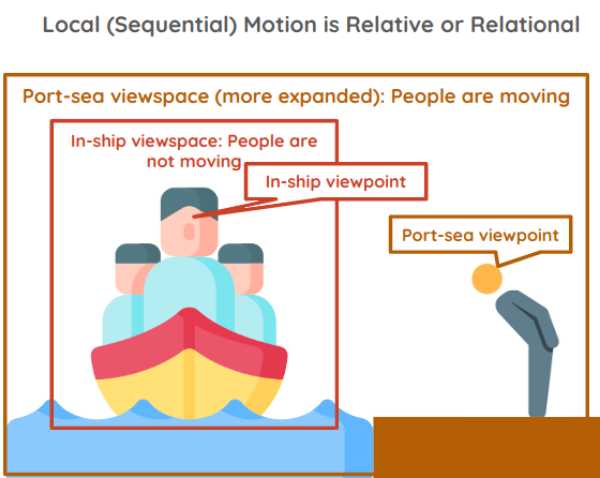True Motion Versus Local (Relative) Motion
Table of Contents
24. What is the current understanding of motion?
Movement is the action by which a body passes from one place to another.
A thing can change location or move and yet not change location or not move at the same time, depending on the reference point used.
For example, someone who is sitting at the stern of a ship that is moving forward believes:
- he is moving relative to his immobile starting point.
- he is not moving relative to the ship on which he is
- This is because he does not change his position relative to the ship’s parts.

We are accustomed to thinking that there is no movement without action.
- So we say that someone who is seated is at rest since he feels no action in himself, even if the ship is moving.
25. What is correct understanding of motion?
Motion is transport of a body or matter from the vicinity of those immediately touching which are at rest, into the vicinity of some others.
Body or matter is everything which is transported together as a unit.
- The body might consist of many particles which have other motions within themselves.
Motion is the transport, not the force or action which transports.
Therefore, motion is always in the moving object, not in the mover.
- This is because people do not distinguish these 2 things carefully.

Motion is a property of the moving body. It is not a substance.
This is similar to how:
- shape is a property [vibrational aspect] of a shaped thing
- rest is the property [vibrational aspect] of a thing at rest.
Motion is merely a mode [vibrational aspect] of the body just as:
- shape is the mode or property of a shaped thing
- rest is the mode or property of a resting thing.
Motion is not an inherent property.